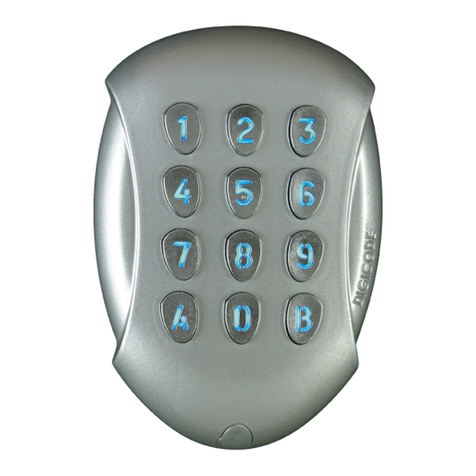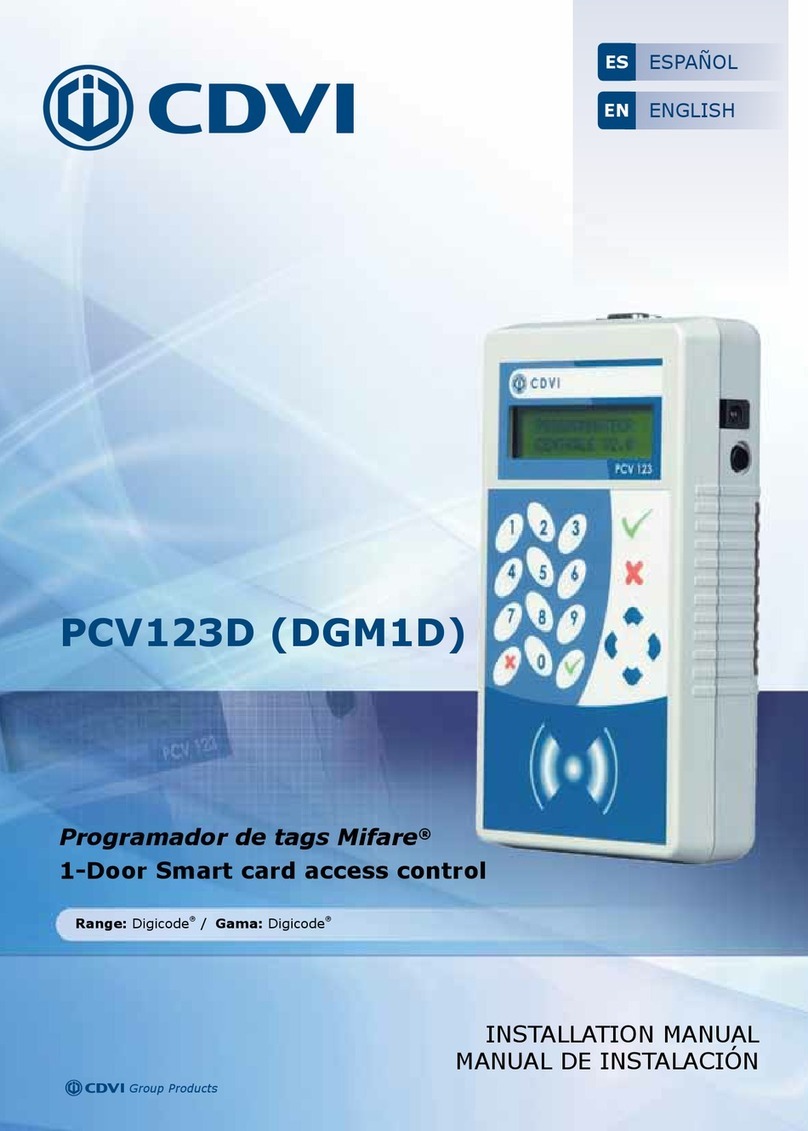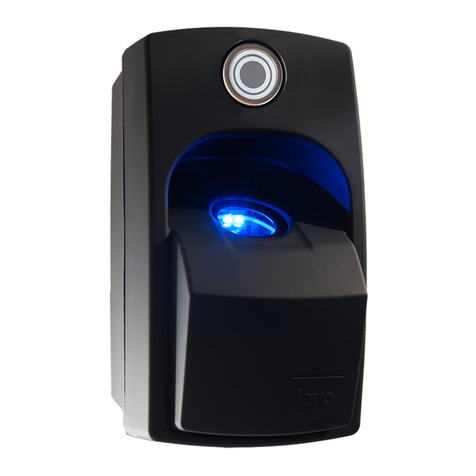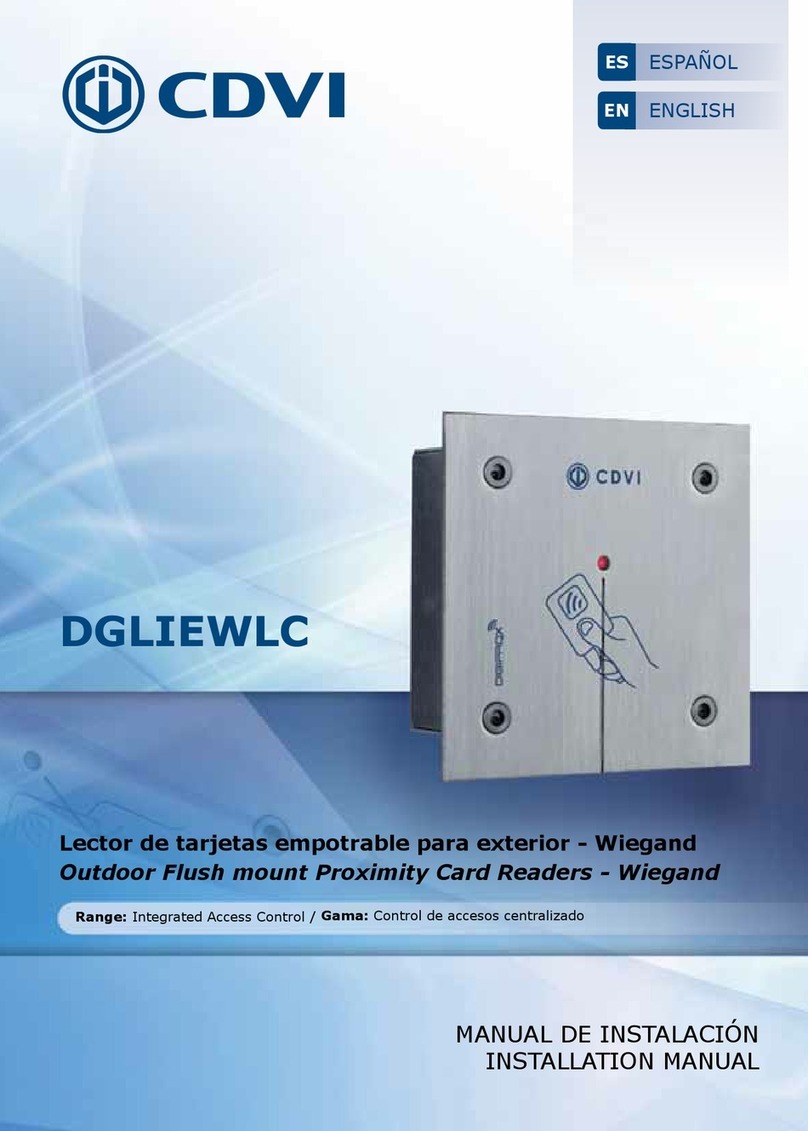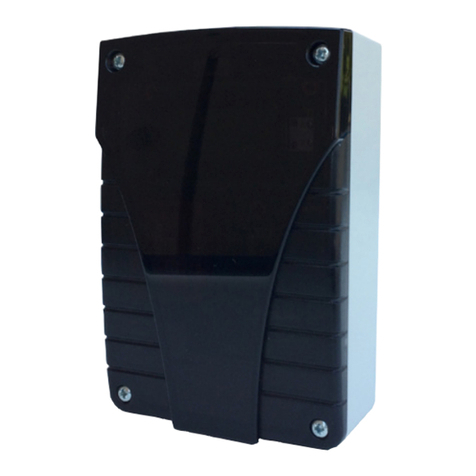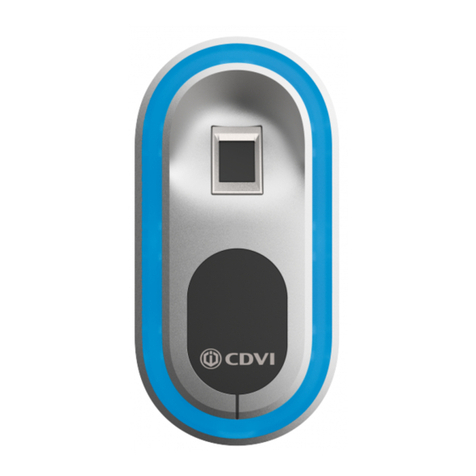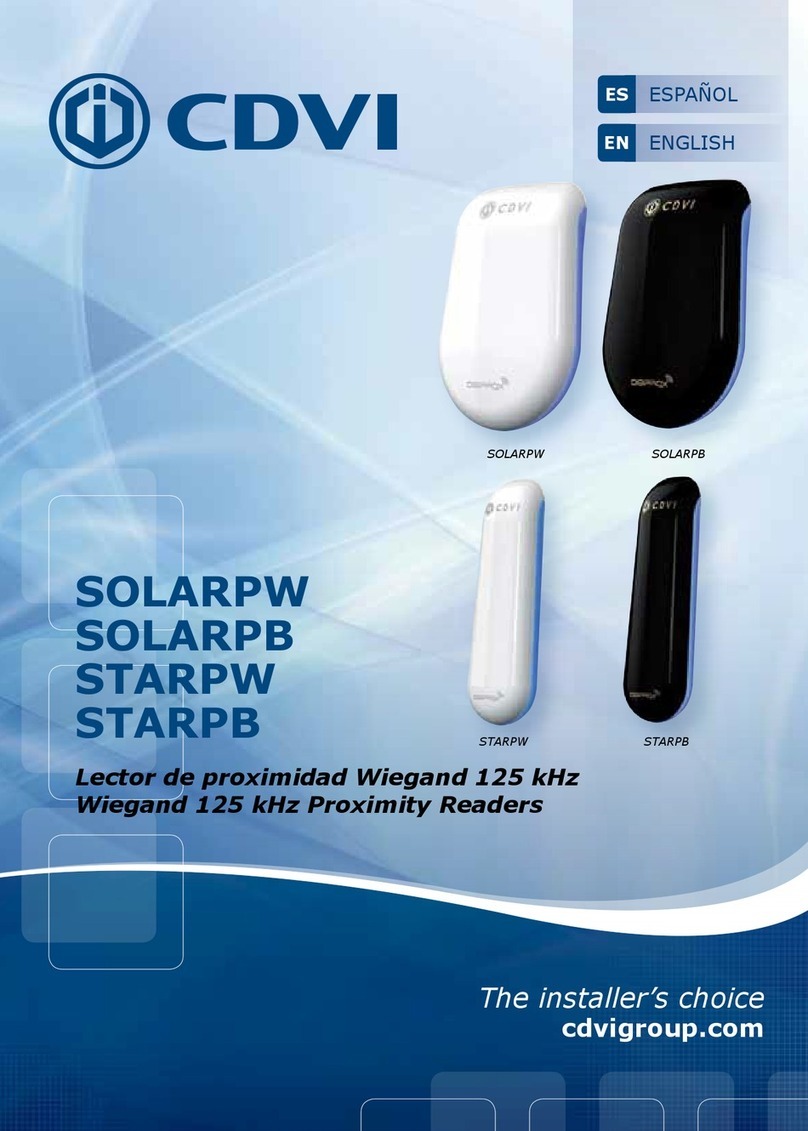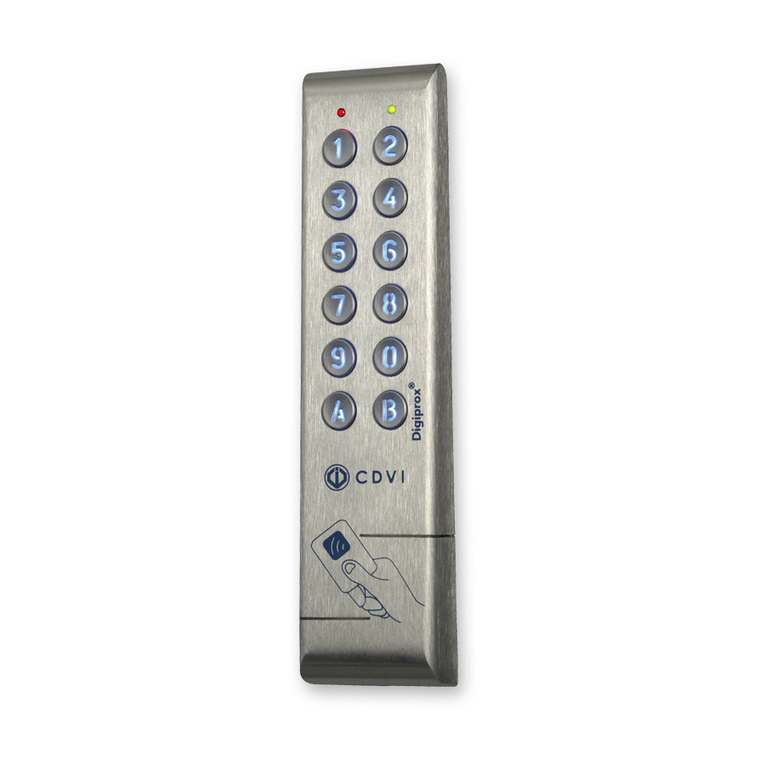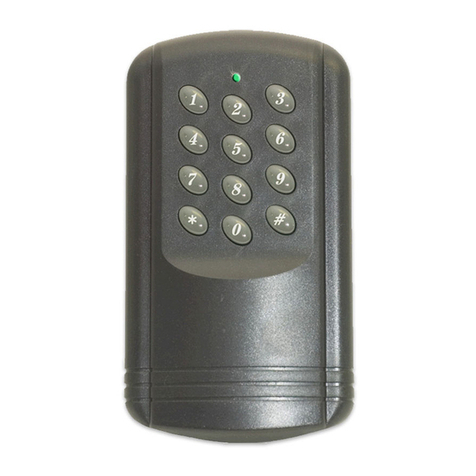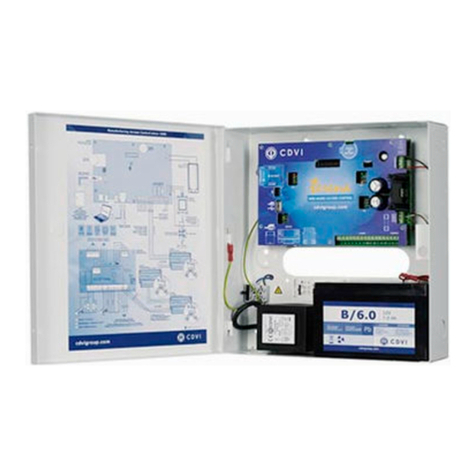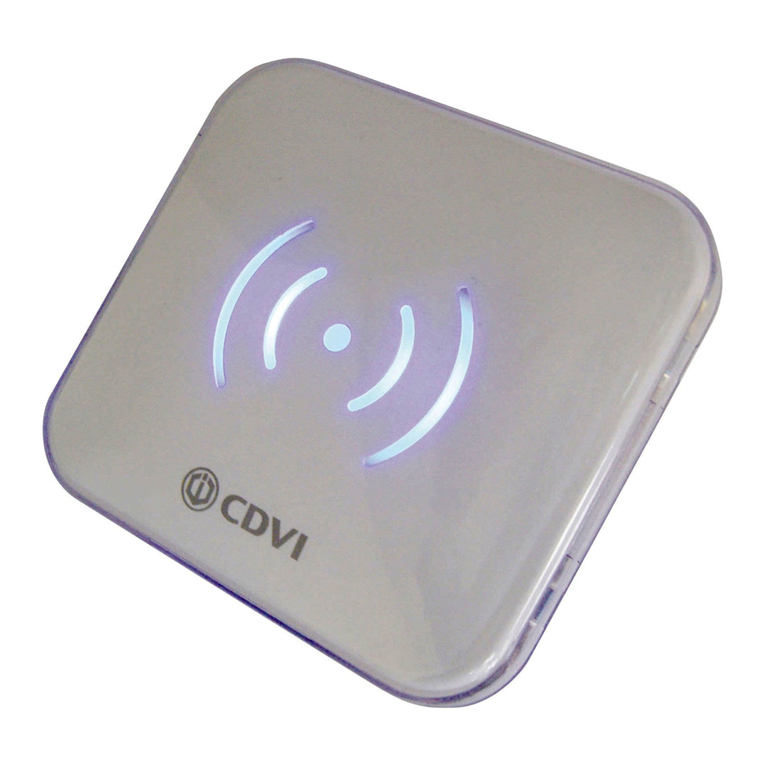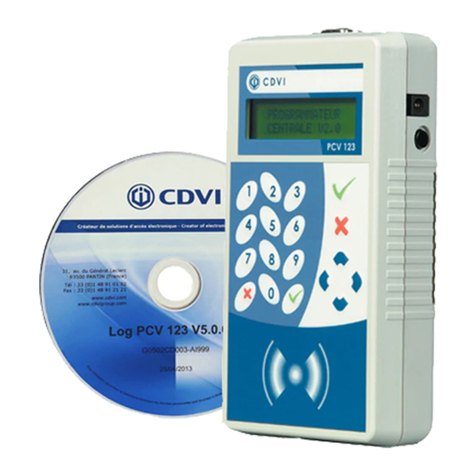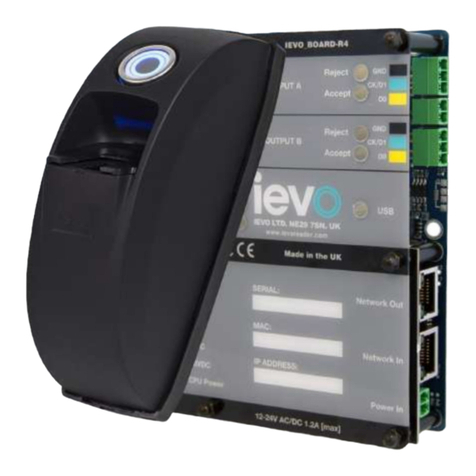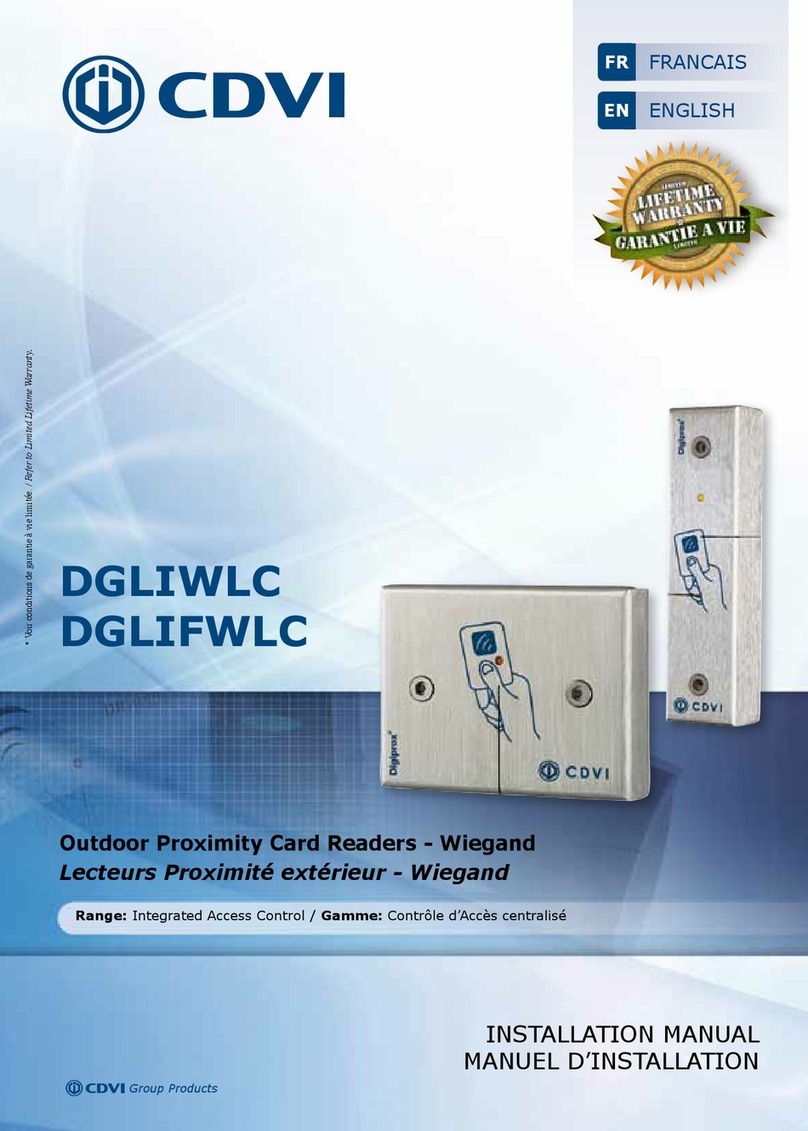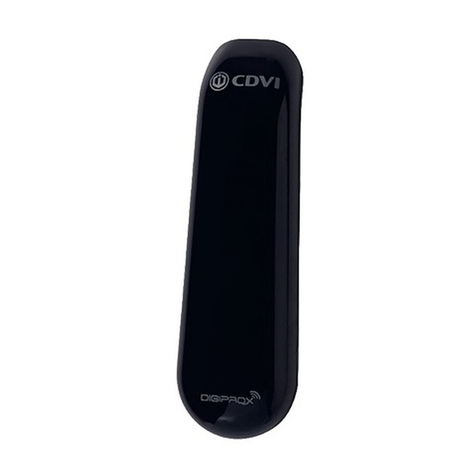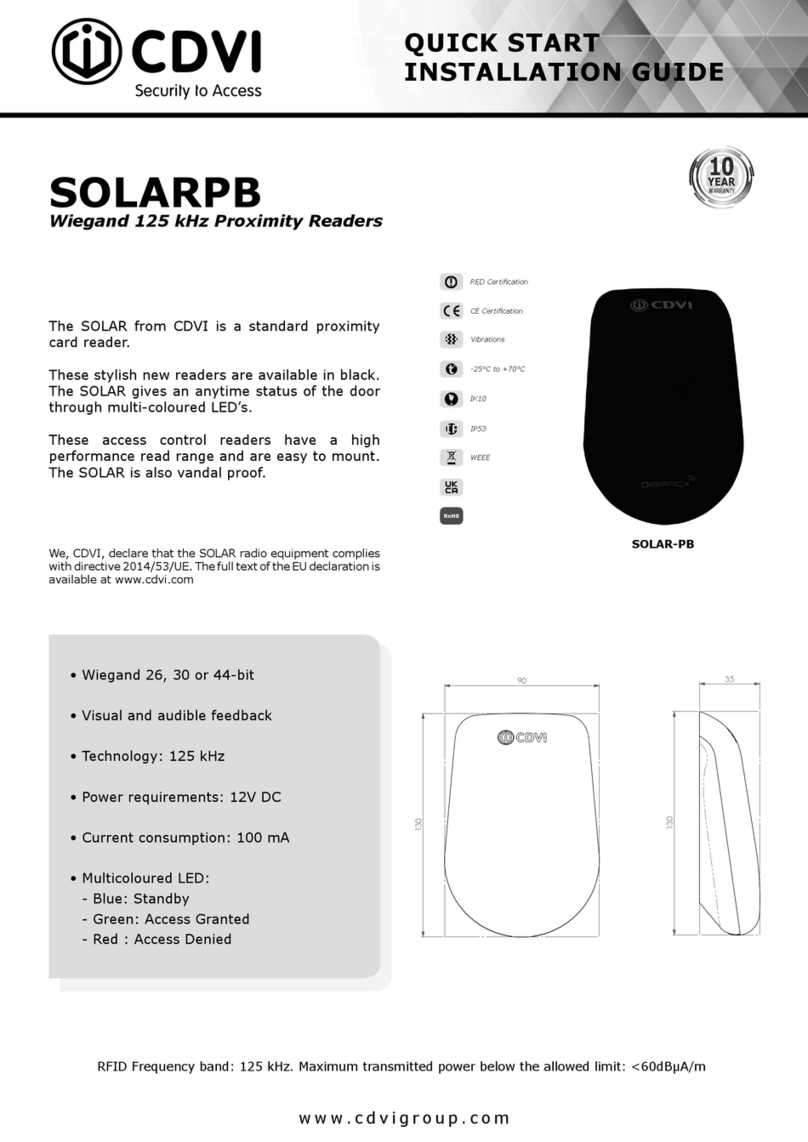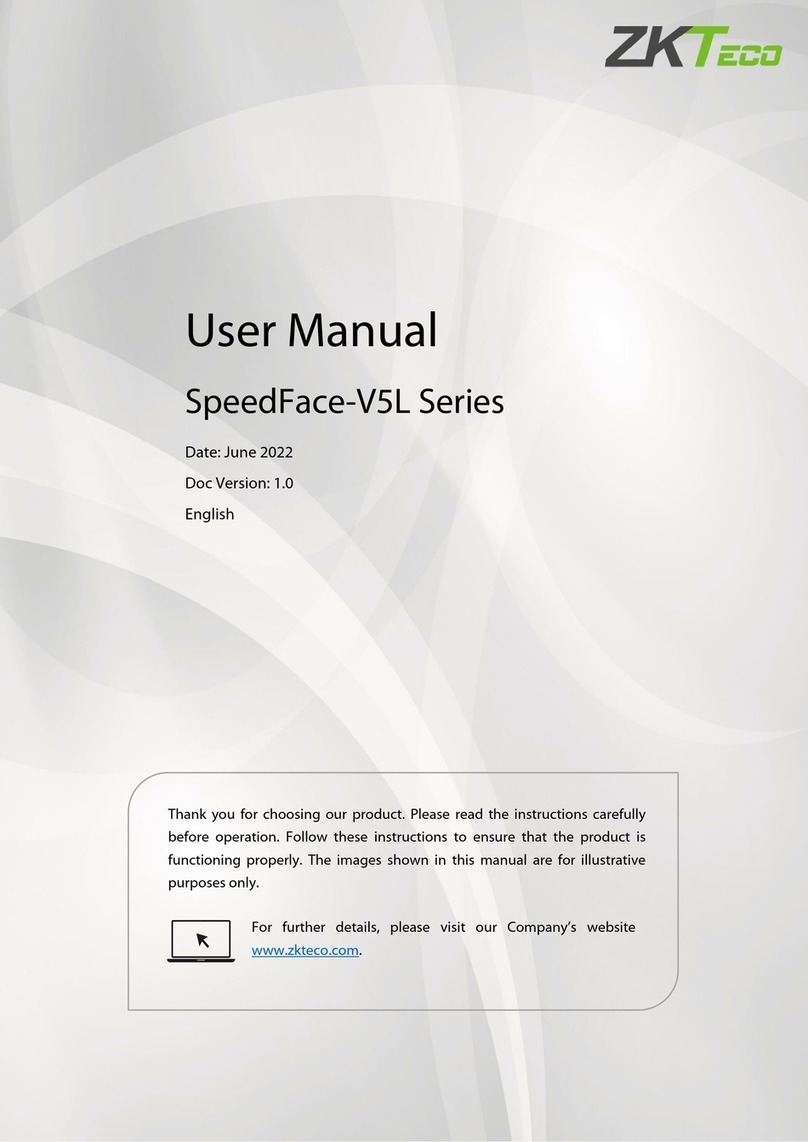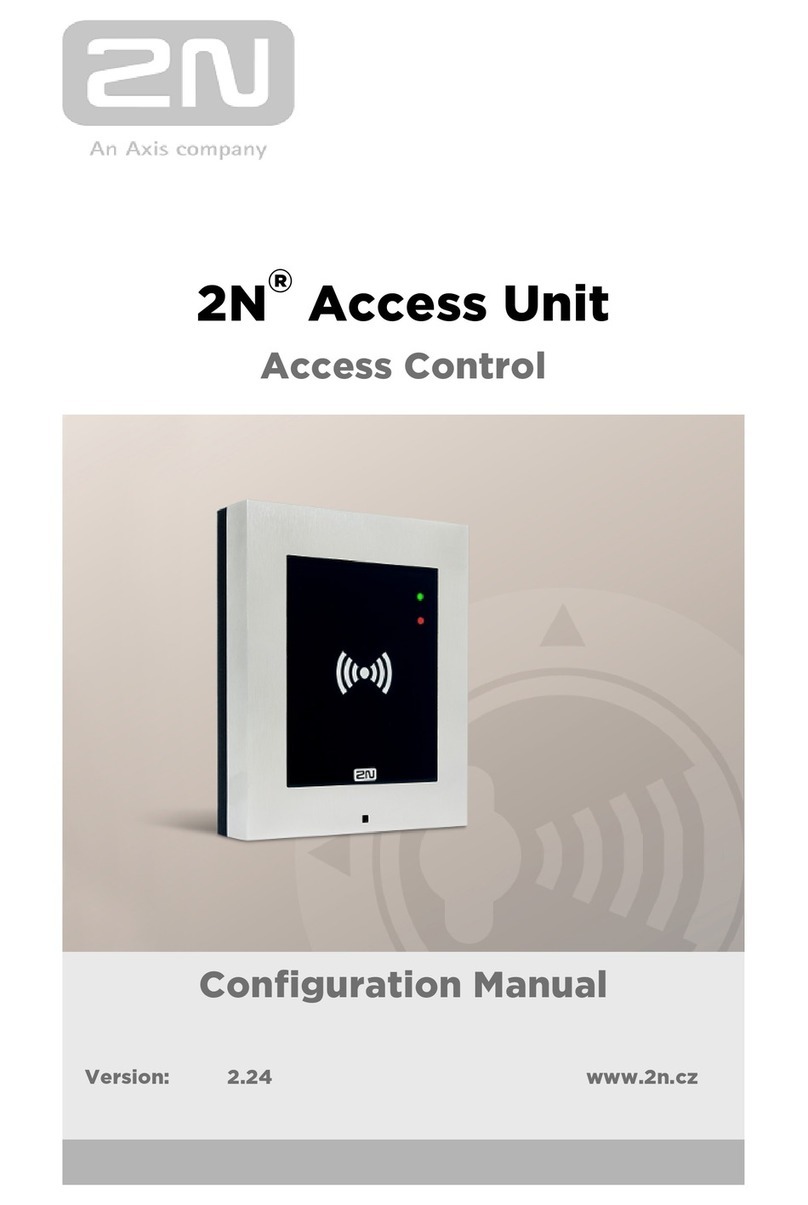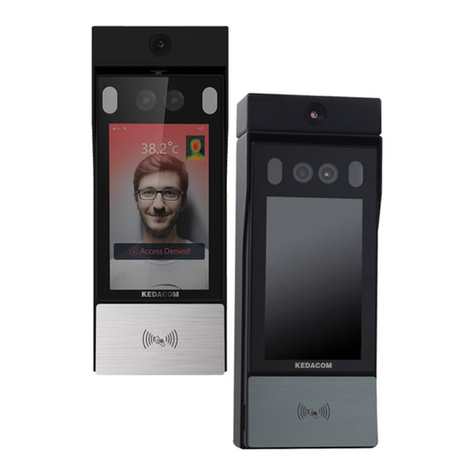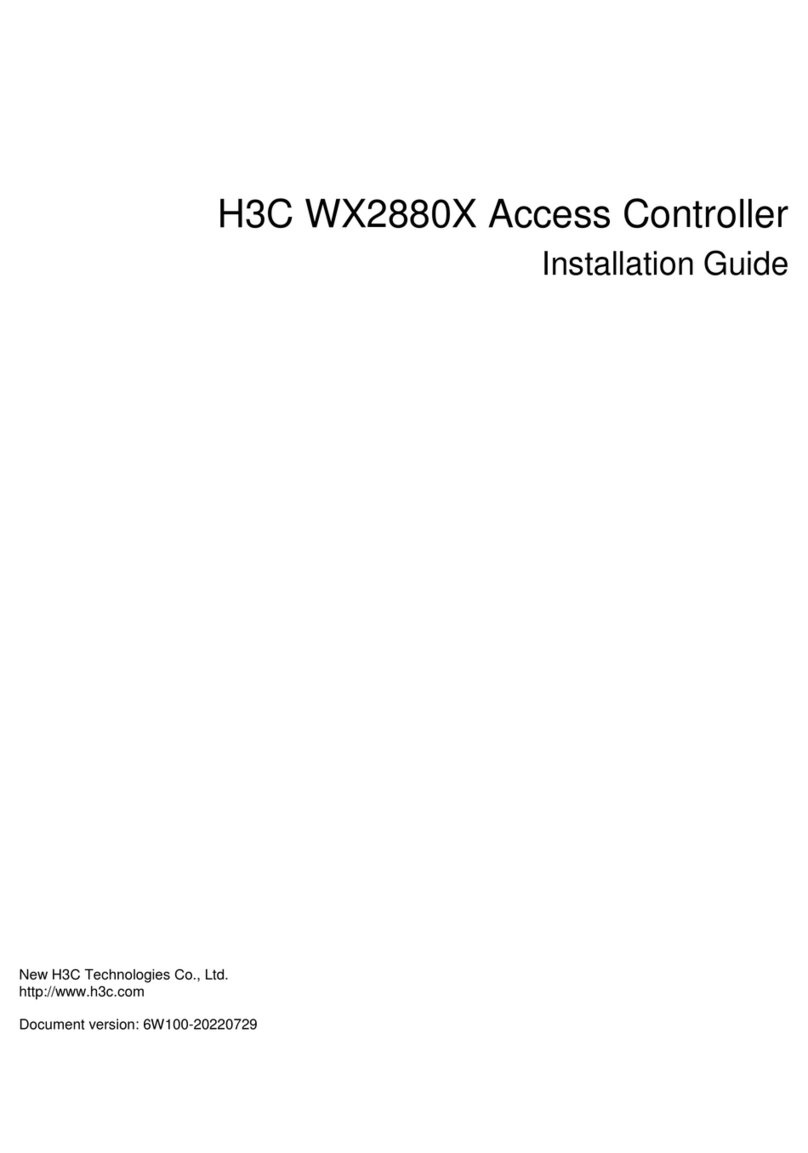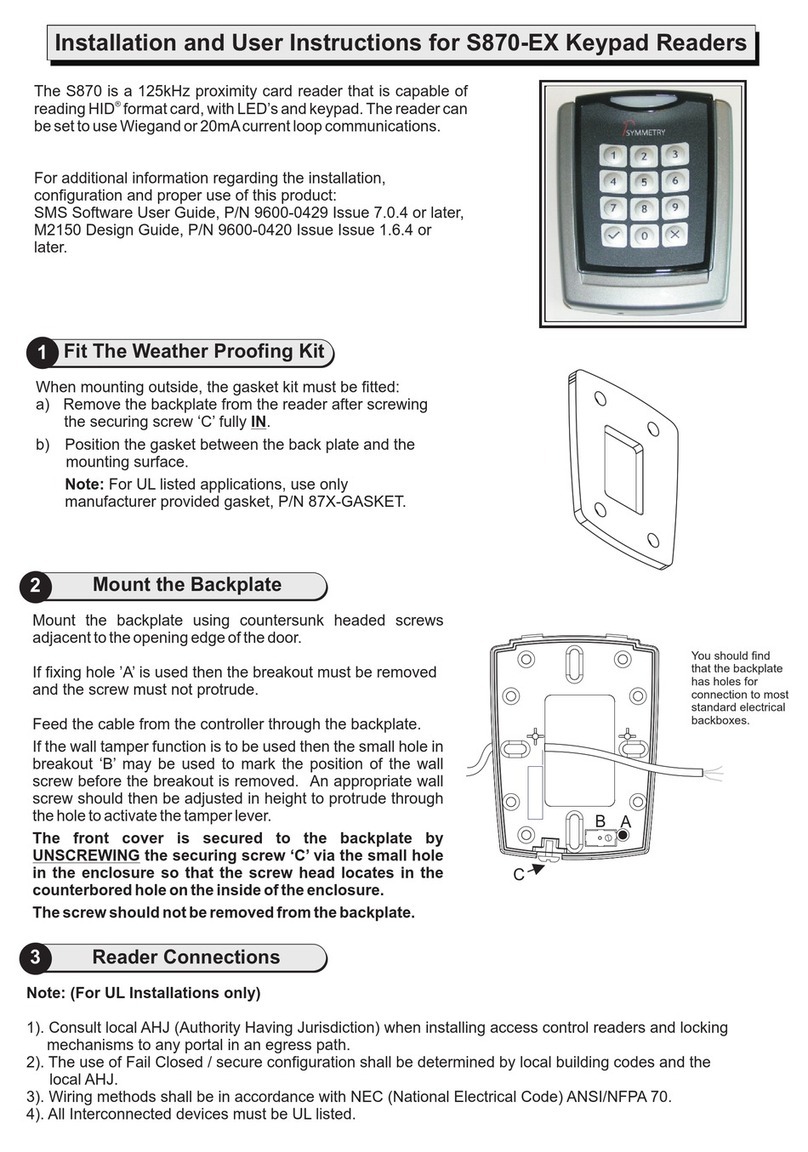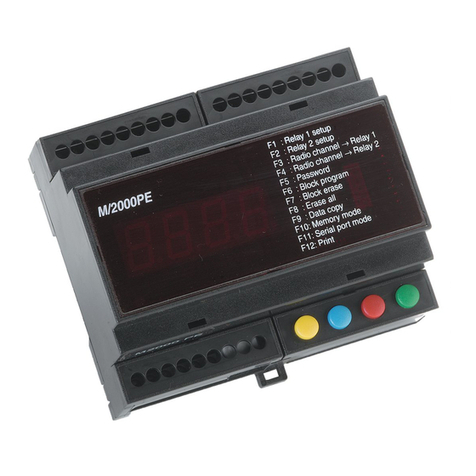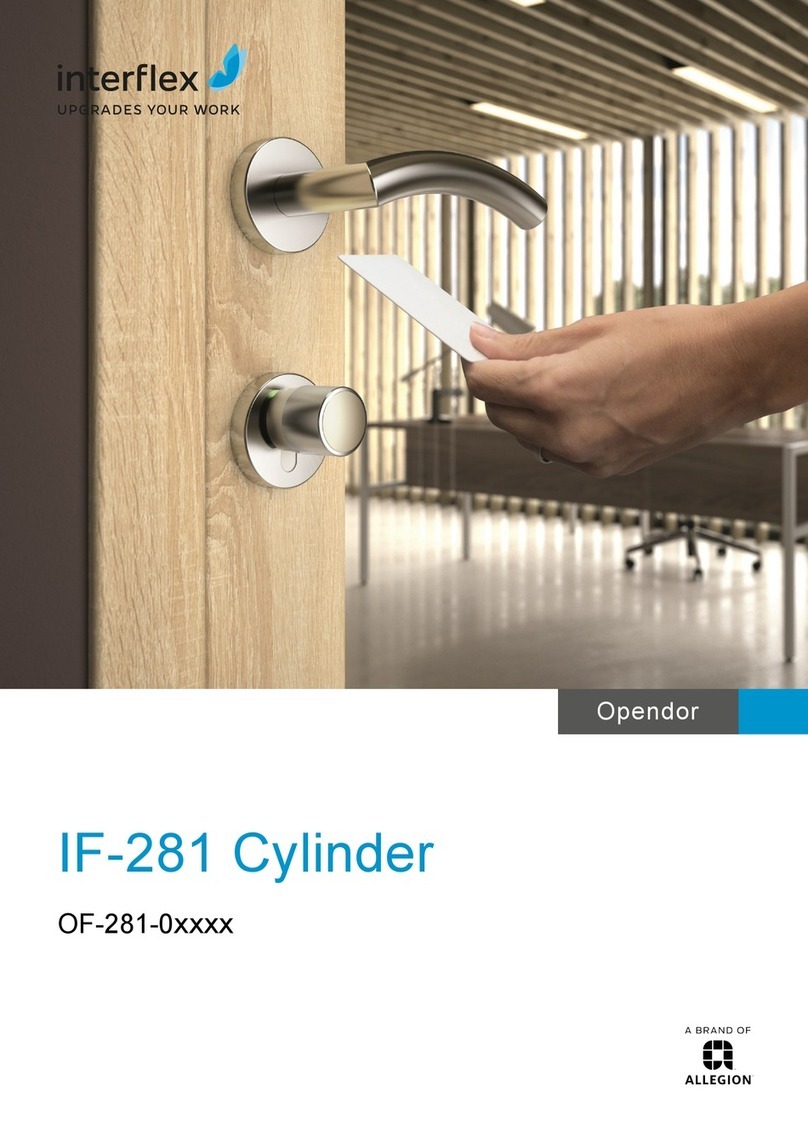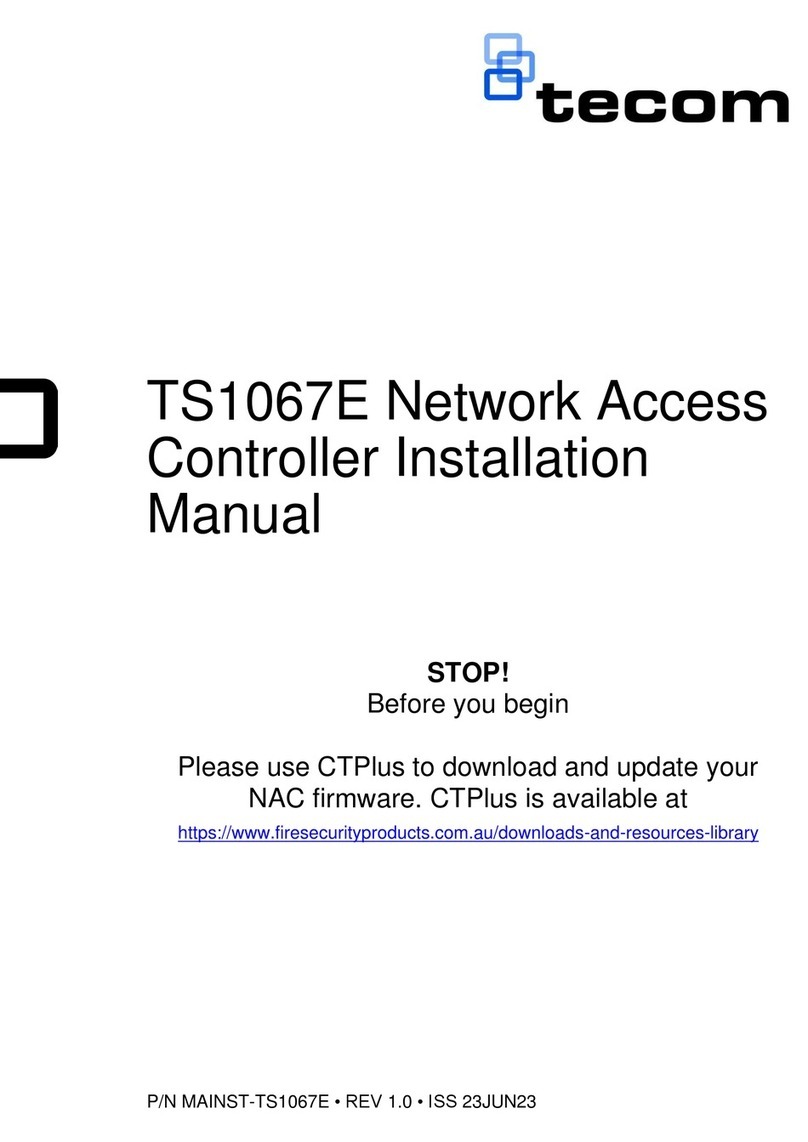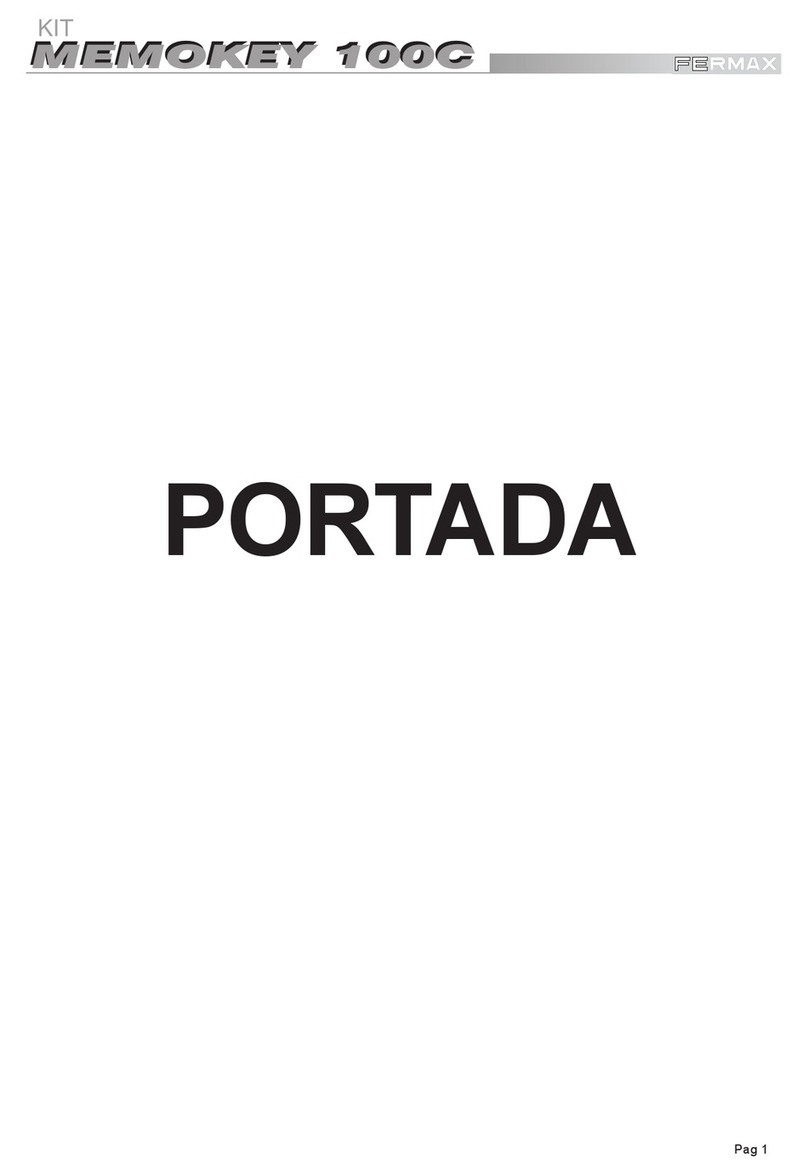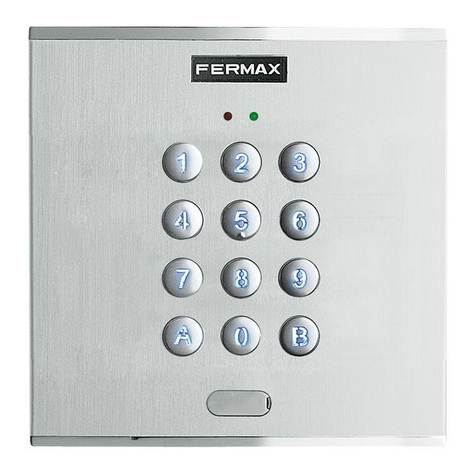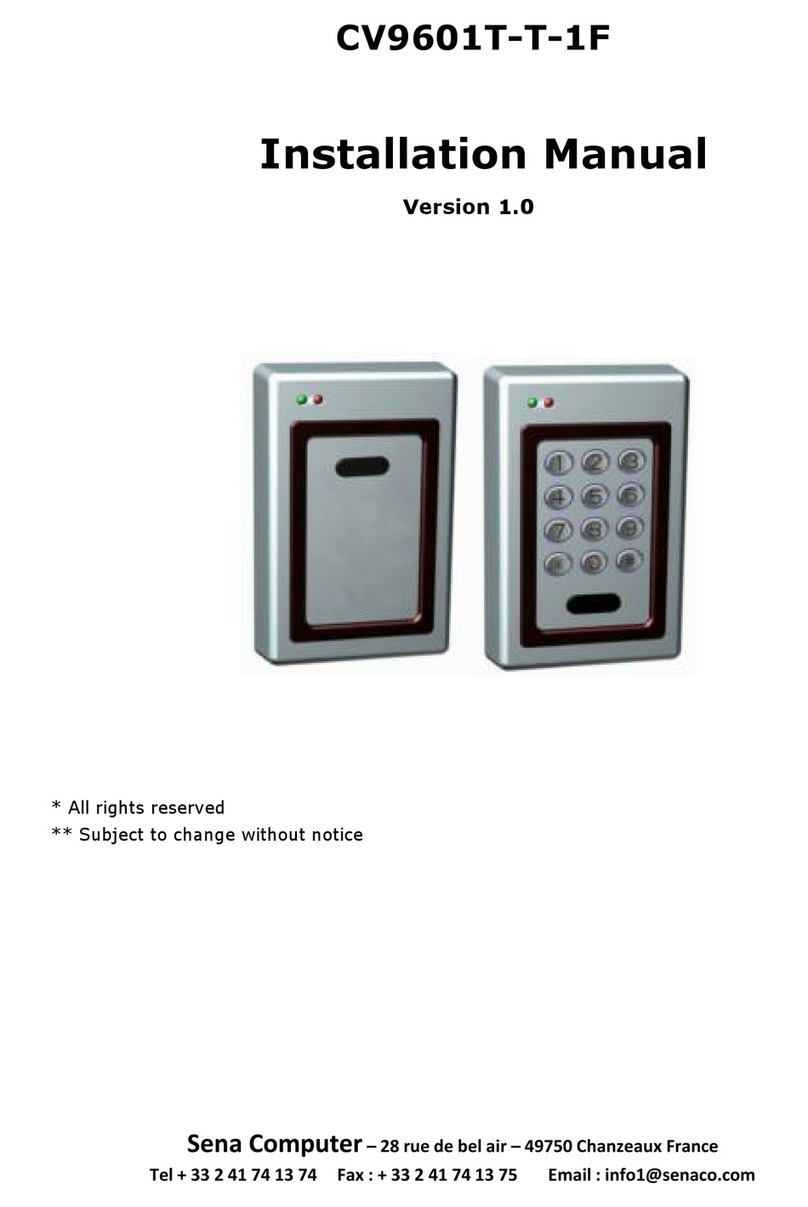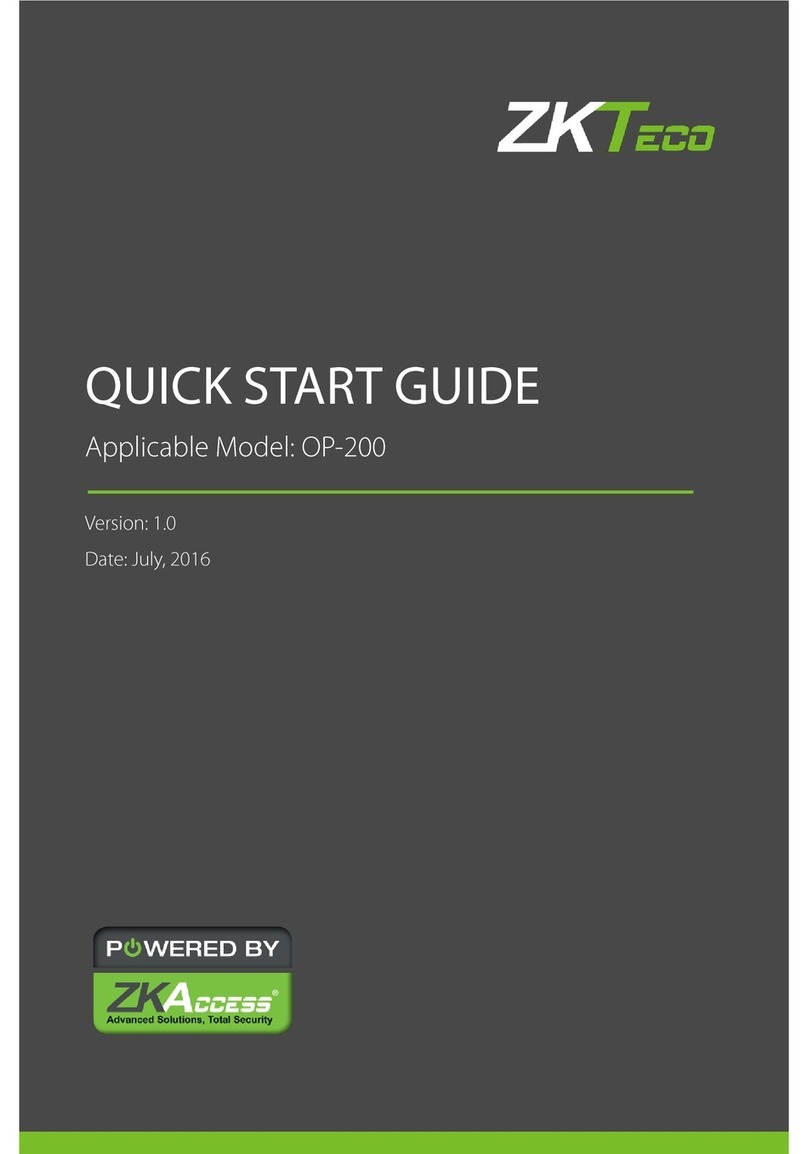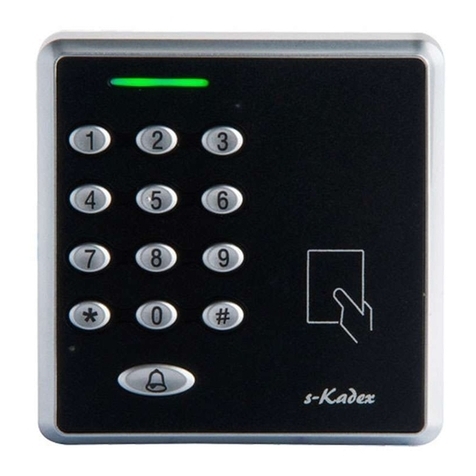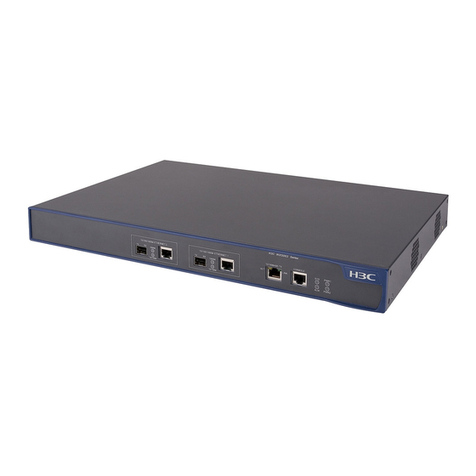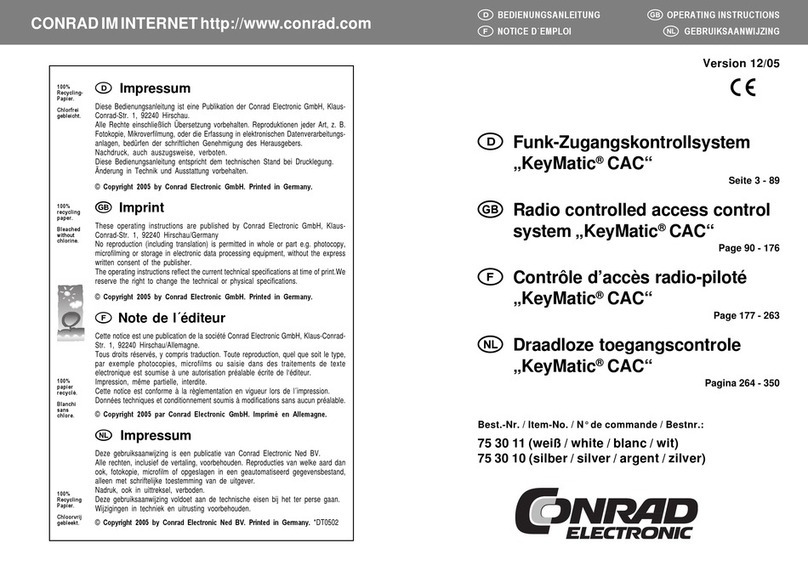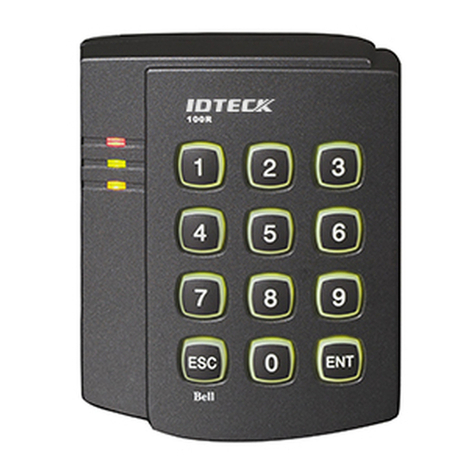A3
A] ENTRY IN PROGRAMMING
1. Enter in programming:
- Swich the power supply off,
- Connect the purple cable with the black cable,
- Switch the power supply on.
2. Two beeps are emitted to con rm entry
in programming:
- The keypad is illuminated.
- The red LED is ON.
Note: The command control of the buzzer
is not possible in programming mode.
B] ILLUMINATION DURATION
1. Enter in programming*.
2. Press A0 to program the illumination duration :
- One beep is emitted.
- The Green LED is lighting up during 1 second.
- Enter the time in seconds,
10 for 10 seconds to 99 for 99 seconds
or enter 00 for a permanent illumination.
- One beep is emitted to con rm
the illumination duration.
3. Disconnect the purple cable with the black cable:
Two beeps are emitted to con rm exit
from programming.
C] OUTPUT FORMAT
1. Enter in programming*.
2. Press A1 to enter in the output format menu:
- One beep is emitted.
- The Green LED is lighting up during 1 second.
- Press 1 to select 26-bit wiegand output format
- Press 2 to select CDVI output format
- Press 3 to select ISO Track 2 output format
- One beep is emitted to con rm programming.
- The Green LED is lighting up during 1 second.
3. Disconnect the purple cable with the black cable:
Two beeps are emitted to con rm exit
from programming.
D] CODE LENGTH
1. Enter in programming*.
2. Press A2 to enter in the code length
setting menu:
- One beep is emitted.
- The Green LED is lighting up during 1 second.
- Press 4 for a 4-digit user code, press 5
for a 5-digit user code or press 6 for a 6-digit
user code.
- One beep is emitted to con rm programming.
- The Green LED is lighting up during 1 second.
3. Disconnect the purple cable with the black cable:
Two beeps are emitted to con rm exit
from programming.
E] PROGRAMMING THE BIT FORMAT
1. Enter in programming*.
2. Press A3 to select the Bit format:
- One beep is emitted.
- The Green LED is lighting up during 1 second.
- Enter 24, 30 or 44 to de ne the bit format.
A0
A1
A2
Default values
- Illumination duration: 10 seconds,
- User code lenght: 5 digits,
- 26 bit wiegand output,
- Buzzer disabled,
- Decimal mode.
Audible Signal
- 1 short beep > keypad powered
and key presses,
- 1 long beep > data computing
in programming,
- 2 short beeps > Entry or Exit
from programming,
- 4 short beeps > data computing error.
Code Length
- The user code must be in 4, 5 or 6 digits,
- In decimal mode, all the keypad keys can be
used to program a user code except the B key,
- In hexadecimal mode, all the keypad keys
can be used to program a user code
except the A and B key,
- Enter the user code and then B to validate
the code.
* Refer to the chapter «Entry in programming».
8cdvi.com
cdvigroup.com
KCPROX WLC
Dual Technology Digicode®/Proximity reader - Wiegand
MANUEL D’INSTALLATION
